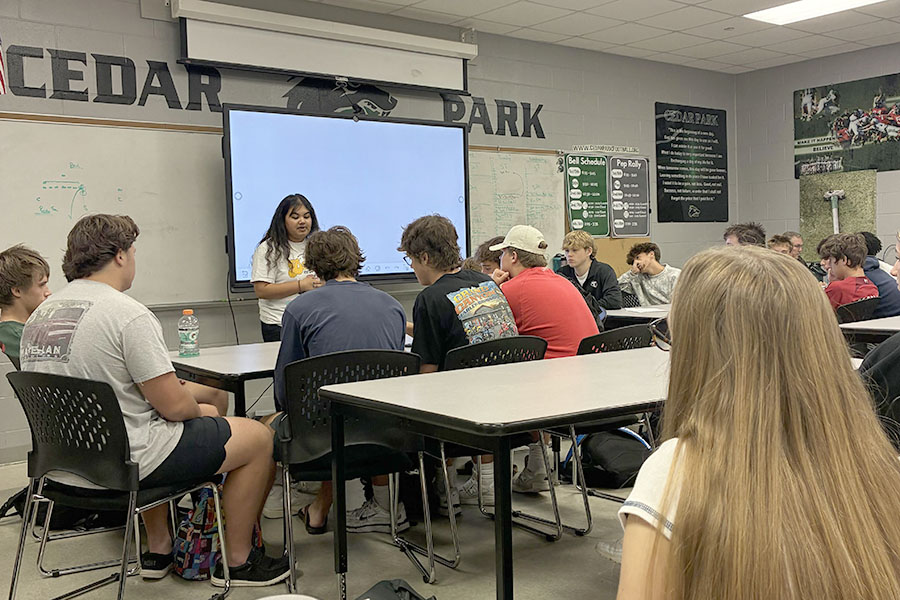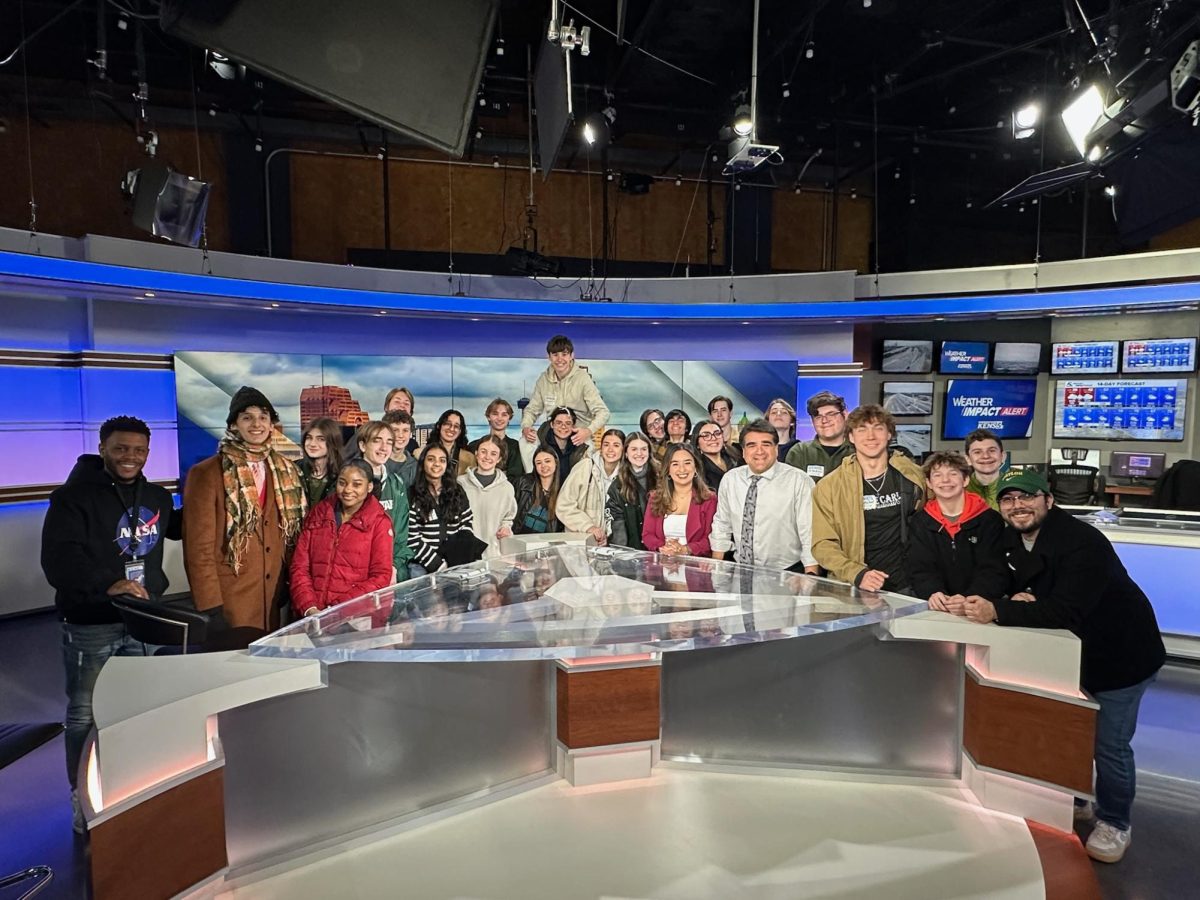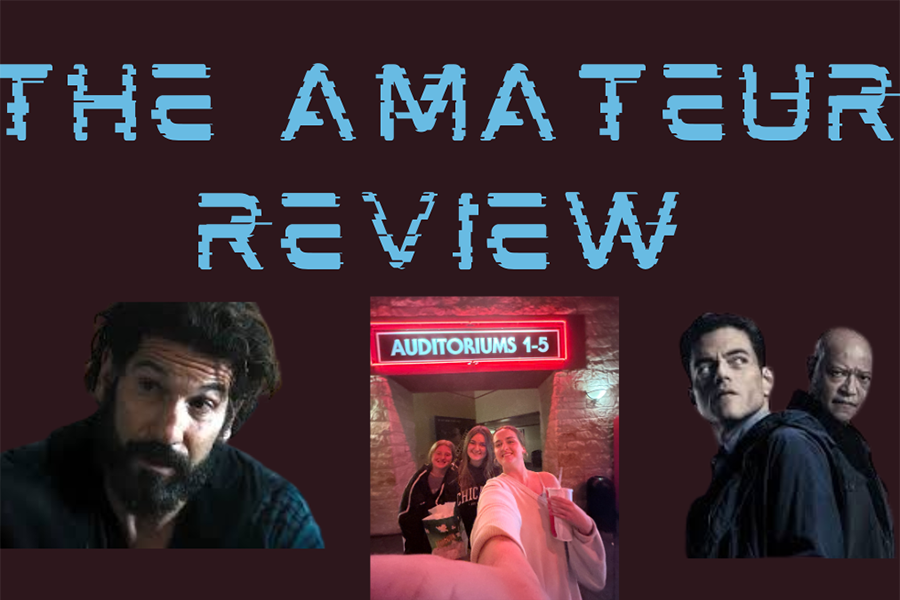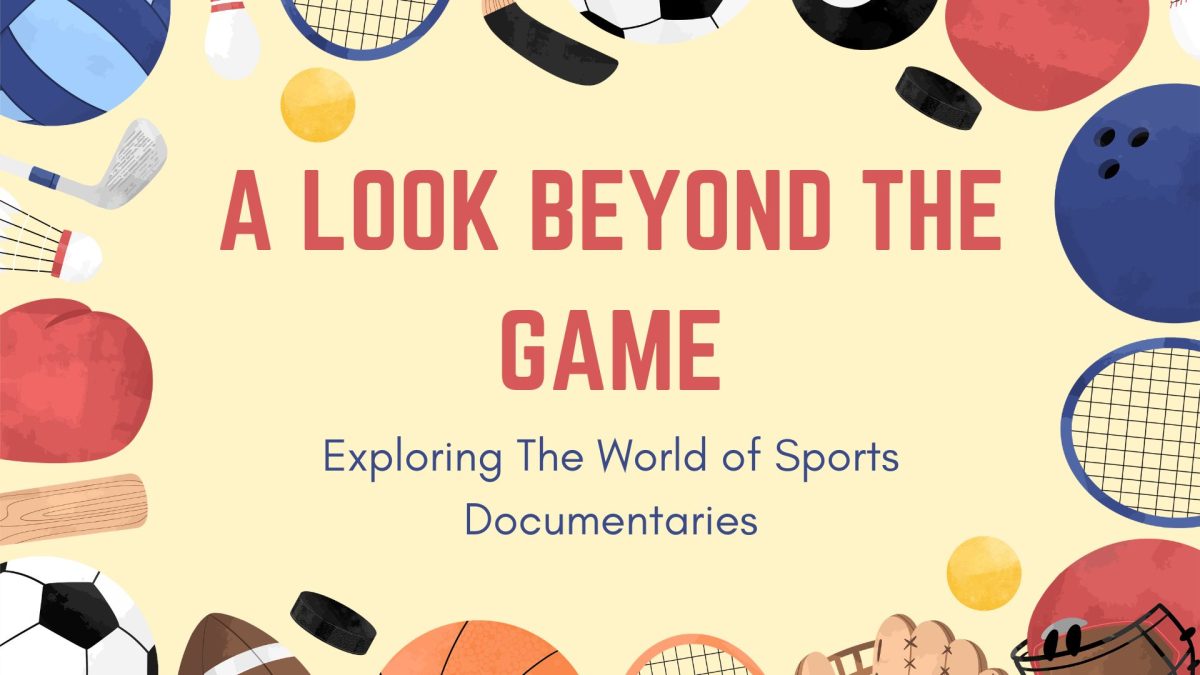A screech of tires on the pavement, a crash of metal on metal that rings through the night air, and an emergency team rushing injured patients to the hospital. Loss of blood from an injury such as a car accident can be fatal in many situations, or cause lasting negative effects to one’s health. Fortunately, hospitals are often able to save these patients through blood transfusions with blood donated from people in the community. HOSA recently contributed to this effort by hosting a blood drive and inviting students, parents and staff to participate.
From the first day of school, HOSA members began preparing for the blood drive by setting weekly meetings, making monthly checklists and working with We Are Blood, a local blood donation organization. The blood drive took place on Dec. 21 in the lecture hall, and over 45 people donated blood.
“It was really simple [to donate blood],” senior and first-time blood donor Noah Luttrell said. “You just register for a time online, fill out a little questionnaire beforehand, and then they draw your blood. All of the teachers were super nice [when you leave your class] because it’s a good cause [and] it helps a lot of people. Saving lives is a really big deal.”
Not only was donating blood beneficial for those receiving the donation, but it was also valuable for the volunteering HOSA students who were in charge of monitoring donors after they got their blood drawn. Health Science Practicum and Health Science Theory teacher Robin Spinelli said she was happy to see the students play such a vital role in patient care.
“When a patient came in for recovery, that was [the students’ patient],” Spinelli said. “They had the experience of seeing how you would interview a patient [and] they saw the blood donation process [as well as] the equipment used. They got to actively use their skills to monitor patients, [and] they could respond if a patient had low blood pressure or if they felt dizzy. [The students learned] things that you can’t learn in a classroom.”
HOSA Treasurer and senior Tiffany Lam volunteered at the blood drive during first and third periods. Lam said she enjoyed watching people come in to donate and helping them recover after getting their blood drawn.
“I made sure that the people who had donated blood were eating and drinking enough, they were sitting down and weren’t feeling faint or dizzy or confused,” Lam said. “[Each patient] had to be there for around 20 minutes, because that is usually when most of the side effects of fainting and dizziness [occur]. Afterward, I would help walk them back to where they needed to go.”
According to Spinelli, the blood contribution of teenagers 17 years and up makes up over 12% of the blood supply that goes out to local hospitals, so high school blood drives are very important for the community. Lam said that donated blood is especially important during pandemics, when many people require a blood transfusion.
“During COVID, there was a shortage of things in the hospital and one of them was often blood,” Lam said. “Especially during pandemics, many people need surgeries or just need different components of blood like platelets, so donating blood is very important.”
Senior Phoebe Solberg also donated for the first time at the blood drive event, and she encourages those who are worried about the process to donate blood and help their community.
“It’s a good overall process, and [it’s] rewarding,” Solberg said. “[The phlebotomists of We Are Blood] are professional, [so] if you have any side effects, they’re trained to take care of that, so you shouldn’t be worried.”
Principles of Health Science, Medical Terminology, and Kinesiology teacher Amy Buffington said that donating blood is a great gift to give to those who need it.
“I think [donating blood] is very important,” Buffington said. “One donation can save three lives. The total process takes probably about 30 minutes to come in [and] your donation only takes about five minutes, so within that amount of time being able to save three lives is pretty amazing.”
Spinelli and Buffington witnessed firsthand the importance of blood donations to people in the community.
“There was a lady that is one of our acquaintances who has been going through cancer treatment, and she had a critical need for platelets during the winter break,” Spinelli said. “She acquired a transfusion of platelets, and for all we know it could have been our donations that helped save her life over the holidays. For me, that is the biggest win of all.”
Parents, students, and faculty who wish to donate blood will have an opportunity at the HOSA blood drive in the spring, or they can make an appointment with local organizations such as We Are Blood or American Red Cross. Students must be 17 or older, weigh at least 115 pounds, and have signed consent from a parent or guardian to donate.







![As her hair blows in the wind, senior Brianna Grandow runs the varsity girls 5K at the cross country district meet last Thursday. Grandow finished fourth in the event and led the varsity girls to regionals with a third place placement as a team. “I’m very excited [to go to regionals],” Grandow said. “I’m excited to race in Corpus Christi, and we get to go to the beach, so that’s really awesome.” Photo by Addison Bruce](https://cphswolfpack.com/wp-content/uploads/2025/10/brianna.jpg)


![Broadcast, yearbook and newspaper combined for 66 Interscholastic League Press Conference awards this year. Yearbook won 43, newspaper won 14 and broadcast took home nine. “I think [the ILPC awards] are a great way to give the kids some acknowledgement for all of their hard work,” newspaper and yearbook adviser Paige Hert said. “They typically spend the year covering everyone else’s big moments, so it’s really cool for them to be celebrated so many times and in so many different ways.”](https://cphswolfpack.com/wp-content/uploads/2025/05/edited-ILPC.jpg)





![Sitting with her friend senior Sohpia Struve at last year’s Austin City Limits Festival, senior Ava Zuniga poses for a picture under a pavilion. They are frequent attendees at ACL, an annual music festival at Zilker Park. “I would recommend seeing a bunch of people,” Zuniga said. “This past year, we camped out for Chappell [Roan] for a really long time. I think the whole point of ACL, [which] is a lot of fun, is that you can go see so many different people, even if you don’t know them. So by camping by one person, it really limits yourself from being able to go see a bunch of people.” Photo courtesy of Ava Zuniga](https://cphswolfpack.com/wp-content/uploads/2025/10/EE9E9484-FE6F-4AA0-B5F5-0C177AB32841-1200x857.jpeg)
![Looking down at his racket, junior Hasun Nguyen hits the green tennis ball. Hasun has played tennis since he was 9 years old, and he is on the varsity team. "I feel like it’s not really appreciated in America as much, but [tennis] is a really competitive and mentally challenging sport,” Nguyen said. “I’m really level-headed and can keep my cool during a match, and that helps me play a bit better under pressure.” Photo by Kyra Cox](https://cphswolfpack.com/wp-content/uploads/2025/09/hasun.jpg)

![Bringing her arm over her head and taking a quick breath, junior Lauren Lucas swims the final laps of the 500 freestyle at the regionals swimming competition on date. Lucas broke the school’s 18-year-old record for the 500 freestyle at regionals and again at state with a time of 4:58.63. “I’d had my eye on that 500 record since my freshman year, so I was really excited to see if I could get it at regionals or districts,” Lucas said. “ State is always a really fun experience and medaling for the first time was really great. It was a very very tight race, [so] I was a bit surprised [that I medaled]. [There were] a lot of fast girls at the meet in general, [and] it was like a dogfight back and forth, back and forth.” Photo by Kaydence Wilkinson](https://cphswolfpack.com/wp-content/uploads/2025/03/Kaydence-2.7-23-edit-2.jpg)
![As the support team sits and poses for a photo in the cafeteria with the counseling team they eagerly wait to start their day. "We [all] seem to be a team, I get up every day and there's days where I don't want to go to work today, but I'm thankful that I have a job and I'm blessed to have what I have," Christopherson said. Photo Courtesy of Julie Weltens.](https://cphswolfpack.com/wp-content/uploads/2025/01/AF9E8470-10D7-4C91-BF28-EC8F86BAB66C-1200x852.jpeg)
![Jumping off the ground, senior linebacker Bennett Patton snatches the ball out of the air for an interception at Thursday’s game against Chaparral. Patton had two interceptions in the 56-14 victory, tying the school record for interceptions in a game. “I was just playing the game,” Patton said. “[I’m] going to go into next week, forget about it and stay humble.” Photo by Harper Chapman](https://cphswolfpack.com/wp-content/uploads/2025/09/bennett-interception.jpg)













![Standing next to several other HOSA volunteers, junior Gwen Greer poses for a picture at the HOSA blood drive on Dec. 21. At this event, Greer was in charge of taking students or teachers back to their rooms, and monitoring patients to make sure they were in good condition. “I think that the best part was seeing how happy people were after they donated because that really does make a big difference,” Greer said. “It’s only a pint of blood, but [donating] really does help people because it can save three lives.”](https://cphswolfpack.com/wp-content/uploads/2024/01/Blood-drive-edit.jpg)

